
|
Warning!
At least some content in this article is derived from information featured in: Harry Potter: Hogwarts Mystery & Harry Potter: Puzzles & Spells & Harry Potter: Magic Awakened & Hogwarts Legacy. |
- "Are you sure that’s a real spell? Well, it’s not very good, is it? I’ve tried a few simple spells just for practice and it’s all worked for me."
- — Hermione Granger's talent for spell-casting at an early age[src]
A spell was a controlled manifestation of magic that affected the world in a supernatural fashion.[1] There were spells for conjuring objects out of thin air and vanishing objects into thin air,[2] spells for transforming something into something else, spells for making object levitate or carry out certain actions,[3] as well as combative spells, like stunning and shielding.[4] The action of performing a spell is referred to as casting or spellwork.[5][6]
Generally cast by a witch or a wizard, spells were often produced with certain wand movements and a verbal incantation, or for more experienced witches and wizards, silently and/or wandlessly.
Some spells could appear as jets of light, such as the Killing Curse. Because of this, spells could often miss, be dodged, or blocked, either with an object or another spell.
Usage[]
- "Now, don't forget that nice wrist movement we've been practising! The swish and flick! And saying the magic words properly is very important, too — never forget Wizard Baruffio, who said 's' instead of 'f' and found himself on the floor with a buffalo on his chest."
- — Professor Flitwick in Charms class[src]
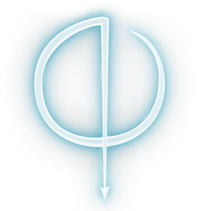
Alohomora wand movement
Normally, spells required four main factors to be properly accounted for in order to succeed: wand movement, incantation, concentration and intention. Although casting some spells were a matter of caster's will, while for others, it was a question of intent,[7] it was invariably the case that if one did not move their wand in the correct way, did not speak the incantation properly and/or could not retain their concentration and/or desired outcome in their imagination during casting, then the spell would fail or backfire.[3]
In addition, the quality and duration of spells depended entirely on the amount of spell energy they were capable of generating for it, as well as their level of success at transferring and distributing it, which could be improved with practice[8] or decline with neglect.[9] It should also be noted that spells could be performed with or without speech and wands, though non-verbal and wandless spells were much more difficult and hence were usually not taught to practitioners until they reached a more advanced level, such as the sixth year of study at Hogwarts.[10]
Most incantations derived from the Latin language (such as Accio)[11] but there were also some English incantations (such as Obliviate[12] or Stupefy).[4] It could be that, in other countries and wizarding territories, spells with an English incantation or another incantation other than Latin-based, could be used in other languages, as long as wizards used the same wand movement, concentration and intention.
Limitations[]
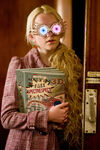
|
"There are plenty of eye-witness accounts. Just because you're so narrow-minded you need to have everything shoved under your nose before you–"
This article or section currently has few or no notes and references. Please help the Harry Potter Wiki by adding notes and/or references to bring the page to a higher standard of quality. |
Spell were as numerous as stars in the sky and their different effects were just as countless. However, some things were simply impossible, even for the most powerful of magic. There was no way to bring the dead back to life. Necromancy had always been considered a failed branch of magic. The best one could do was reanimate a corpse, creating things like Inferi or Charmed skeletons. It was also impossible for love to be recreated artificially, Entrancing Enchantments only dulled the senses and created feelings of infatuation. Additionally, while duplicating material objects was a simple matter, it was impossible to duplicate a soul. There was also no spell for protecting dead flesh from fire.
While some spells, like the Levitation Charm and the Match to needle spell were simple and could easily be mastered by children, other spells, like the Patronus Charm and Human Transfiguration were extraordinarily difficult and even adult wizards struggled to learn them.
Some spells, like the Hour-Reversal Charm, were unstable and dangerous. Although, there were ways to compensate; rather than casting the spell directly, the Hour-Reversal Charm could have been used to enchant an object through which its effects could have been more safely activated.[13]
The Killing and Cruciatus Curses, two of the Unforgivable Curses, were also extremely hard to perform successfully by non-Dark wizard or witches, as both required ill-intent and genuine desire to kill or harm the victim.
Appearance[]
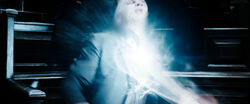
The Stunning Spell creates light when used
When performed, spells usually manifested as light, sparks, lightning, or fiery energy of various colours from the tip of the wand they were cast with, such as the tell-tale red of Stupefy[14] or green of Avada Kedavra.[15] However, some spells, such as Accio and Silencio, produced no visible intermediate effect.
Some spells also made loud noises when cast, although Harry Potter noted that "bangs and smoke were more often the marks of ineptitude than experience."[16]
Durations[]
Typically, spells, once cast, had a time limit placed upon them. This means that effects and after-effects magically induced by them were not meant to last. Some spells, like Expelliarmus, only operated briefly and swiftly, as they carried out their intended purpose instantaneously and didn’t need to continue to function.[17] While spells like Stupefy[5] and Petrificus Totalus would wear off on their own eventually.[18]
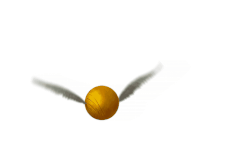
A Golden Snitch, an object with an enchantment that lasted long after the caster's death
Counter-spells could have also been used to end a long lasting spell's effect prematurely. Likewise, a spell whose effect had yet to diminish would disappear at the moment of the caster's death. However, it was mentioned that ancient Egyptian wizards could place curses on their tombs for anyone who might open them, and that these curses remained long after the casters were presumed dead. It could be that the Egyptian wizards used curses that could grow stronger over time or at least retain their power after the casters' deaths, as that was one known aspect of certain Dark magic.[19]
Even if a spell wore off or was undone, it might have had permanent after-effects. Memory Charms could be so strong that they could completely remove a person's memory or even damage their mind permanently.[12][20] If the Imperius Curse was cast poorly on a victim, or if the Cruciatus Curse was used on a victim for a prolonged period of time, it could also damage the victim's mind permanently. The Killing Curse would instantly kill its victim, and that would be irreversible and permanent, unless one was protected by sacrificial protection or had previously created at least one Horcrux the moment they were hit with the curse.
Origin[]
Naturally, every spell had to have been invented by someone. Severus Snape for example was often attributed with the creation of spells such as Levicorpus and Sectumsempra during his time as a student at Hogwarts.[21][22]
New spells could be crafted by wizards and witches, though spell creation was a highly difficult and dangerous practice, as exemplified by Pandora Lovegood, who was killed in a backfired attempt at spell-crafting.[23]
In some cases, a newly created spell might have had a similar, but more favourable result to a pre-existing spell, which could result in the pre-existing spell becoming obsolete. The spell Open Sesame was once used to bypass locked doors, but it resulted in the whole door being destroyed. It was later made obsolete by the spell Portaberto, which destroyed only the lock, still destructive, but more subtle. This spell later became obsolete itself with the discovery of Alohomora, which simply unlocked the lock without any damage to the door.
In some cases, there was dispute over who had invented a certain spell; Miranda Goshawk believed the Disarming Charm was most likely invented by Elizabeth Smudgling, who used it to win a duelling contest in Dartmoor.[24] However, some historians believed Merlin was the one who invented it. Others claimed that its first widespread use was in Madagascar in the 11th century.
Classification[]
- "There was a lot more to magic, as Harry quickly found out, than waving your wand and saying a few funny words."
- — Harry Potter learning that magic is not as easy as he thought[src]
Below is a list of all known categories that spells could be assigned to.
|
Spell Type |
Defining Feature |
Notes |
Example |
|---|---|---|---|
|
Alteration of the object's form or appearance. Conjuring objects out of thin air, making objects vanish into thin air, and making two things switch places also fall under Transfiguration. |
Spells of this group may be separated into true transfiguration spells (where an existing object was altered) and conjurations, where the desired object was seemingly transfigured out of thin air. |
Vera Verto - a true transfiguration spell that would change animals into water goblets.[25][26] | |
| Avis - a conjuration that would produce a flock of birds.[27][28] | |||
|
A very wide range of different spells concerned with giving a target new and unexpected properties and/or making the target perform certain actions, among other possible effects. |
When cast by an experienced practitioner, charms appeared to usually have fairly long-lasting effects. |
Expelliarmus - the Disarming Charm, so-called because it would change its object's (the opponent's) quality from armed to disarmed by separating them from their wand.[17] | |
|
Minor Dark Magic. They caused a small inconvenience to the target. Their effects were irritating but amusing, almost playful.[29] |
Jinxes could only be maintained as long as the caster kept eye contact.[30] |
Impedimenta - the Impediment Jinx, which (appropriately) would impede the forward motion of an object.[4] | |
|
Moderate Dark Magic. They caused a major inconvenience and/or a low level of harm to the target.[29] |
Densaugeo - a hex that would horribly enlarge the target's teeth.[27] | ||
|
The worst kind of Dark Magic. They caused extreme harm to the target or otherwise affected them in a strongly negative manner.[29] |
Avada Kedavra - Would instantly kill the target.[15][31] | ||
|
Reversed the effects of another spell. |
Counter-spells were used to inhibit or counteract the effects of other spells. There were four known types: Counter-jinxes, counter-curses, counter-charms, untransfigurations and undifferentiated counter-spells (it is unknown whether or not counter-hexes exist). Whilst nomenclature is complex, they all shared the common trait of inhibiting another spell. |
Finite Incantatem - a widely-employed counter-spell used to terminate spell effects in general.[17] | |
|
For improving the condition of a living, injured or ill target. |
It should be noted that when it came to the classification of spell types, "the boundaries are flexible," and as such, types of spells may overlap, or have non-indicative effects.[33] It also seems likely that certain spell types belonged to separate classification schemes to others.
For example: Petrification was dark magic of the most advanced kind,[34] but it was also Transfiguration; Melofors was both a Jinx and a Conjuration,[26][35] Fiendfyre could be considered as conjuration as well as a curse[36] and many healing spells could also be considered either charms or counter-spells. Hence, it appears that charm vs transfiguration is one method of classification and differentiation, and that charm/counter-spell/healing spell vs jinx/hex/curse is a different one.
Due to this overlap, it was easy to get Transfiguration and Charms mixed up. A good rule of thumb for telling the difference was that a charm added to or changed the properties of an object, while transfiguration changed the object itself. Transfigurations was concerned with what the object is (its form), while a charm was concerned with what the object is doing (its function).[37]
Texts on spells[]
Behind the scenes[]
- J. K. Rowling defined a spell as "The generic term for a piece of magic."[44]
- Many spells are portrayed as energy blasts, bolts or beams, sometimes in the shape of lightning, with various colours. Other times, spells can manifest as balls or bursts of sparks and fire of various colours, vibrational shockwaves, wave like wisps of smoke like energy, or flashes of light, but in many instances, these physical manifestations of spells can be used as projectiles.
- Commonly, a spell can also contain great concussive force or even intense heat, especially when they hit something that is not the target of the spell, with it being enough to damage objects or surfaces. Also, many offensive spells are able to knock down or send a person flying through the air.
See also[]
Appearances[]
- Harry Potter and the Philosopher's Stone (First appearance)
- Harry Potter and the Philosopher's Stone (film)
- Harry Potter and the Philosopher's Stone (video game)
- Harry Potter and the Chamber of Secrets
- Harry Potter and the Chamber of Secrets (film)
- Harry Potter and the Chamber of Secrets
- Harry Potter and the Prisoner of Azkaban (video game)
- Harry Potter and the Goblet of Fire
- Harry Potter and the Goblet of Fire (film)
- Harry Potter and the Goblet of Fire (video game)
- Harry Potter and the Order of the Phoenix
- Harry Potter and the Order of the Phoenix (film)
- Harry Potter and the Order of the Phoenix (video game)
- Harry Potter and the Half-Blood Prince
- Harry Potter and the Half-Blood Prince (film)
- Harry Potter and the Half-Blood Prince (video game)
- Harry Potter and the Deathly Hallows
- Harry Potter and the Deathly Hallows: Part 1
- Harry Potter and the Deathly Hallows: Part 1 (video game)
- Harry Potter and the Deathly Hallows: Part 2
- Harry Potter and the Deathly Hallows: Part 2 (video game)
- Harry Potter and the Cursed Child
- Harry Potter and the Cursed Child (play)
- Fantastic Beasts and Where to Find Them: The Original Screenplay
- Fantastic Beasts and Where to Find Them (film)
- Fantastic Beasts: The Crimes of Grindelwald - The Original Screenplay
- Fantastic Beasts: The Crimes of Grindelwald
- Fantastic Beasts: The Secrets of Dumbledore - The Complete Screenplay
- Fantastic Beasts: The Secrets of Dumbledore
- Fantastic Beasts and Where to Find Them
- Quidditch Through the Ages
- The Tales of Beedle the Bard
- Daily Prophet Newsletters (Mentioned only)
- J. K. Rowling's official site (Mentioned only)
- The Queen's Handbag
- Pottermore
- Harry Potter (website)
- The Wizarding World of Harry Potter
- The Making of Harry Potter
- Harry Potter: The Character Vault (Mentioned only)
- Harry Potter: The Creature Vault (Mentioned only)
- Harry Potter and the Forbidden Journey
- Harry Potter and the Deathly Hallows: Motorbike Escape
- Harry Potter Official Site
- Harry Potter: The Wand Collection (Mentioned only)
- Harry Potter Trading Card Game
- LEGO Harry Potter
- LEGO Harry Potter
- LEGO Harry Potter: Building the Magical World
- LEGO Creator: Harry Potter
- Creator: Harry Potter and the Chamber of Secrets
- LEGO Harry Potter: Years 1-4
- LEGO Harry Potter: Years 5-7
- LEGO Dimensions
- Harry Potter: Spells
- Harry Potter for Kinect
- Wonderbook: Book of Spells
- Wonderbook: Book of Potions
- Fantastic Beasts: Cases from the Wizarding World
- Harry Potter: Hogwarts Mystery
- Harry Potter: Wizards Unite
- Harry Potter: Puzzles & Spells
- Harry Potter: Magic Awakened
- Hogwarts Legacy
- Harry Potter: Magic Caster Wand
Notes and references[]
- ↑ 1.0 1.1 1.2 Wonderbook: Book of Spells
- ↑ Harry Potter: Hogwarts Mystery, Year 5, "Ordinary Wizarding Levels" Achievement - Part 1, Side Quest "Take the O.W.L.s!" - (see this video)
- ↑ 3.0 3.1 Harry Potter and the Philosopher's Stone, Chapter 10 (Hallowe'en)
- ↑ 4.0 4.1 4.2 Harry Potter and the Goblet of Fire, Chapter 31 (The Third Task)
- ↑ 5.0 5.1 Harry Potter and the Order of the Phoenix, Chapter 18 (Dumbledore's Army)
- ↑ Harry Potter and the Order of the Phoenix, Chapter 20 (Hagrid's Tale)
- ↑ Harry Potter: Wizards Unite (Calamity Essentials - Rhyme and Reason)
- ↑ Harry Potter: Wizards Unite (SOS Task Force Training: When players obtains a new skill from the skill tree, the in-universe explanation given is that their spell-casting has improved on account of their improved ability to distribute spell energy.)
- ↑ Writing by J. K. Rowling: "Gilderoy Lockhart" at Harry Potter (website)
- ↑ Harry Potter and the Half-Blood Prince, Chapter 9 (The Half-Blood Prince)
- ↑ 11.0 11.1 11.2 Harry Potter and the Goblet of Fire, Chapter 20 (The First Task)
- ↑ 12.0 12.1 Harry Potter and the Chamber of Secrets, Chapter 16 (The Chamber of Secrets)
- ↑ Writing by J. K. Rowling: "Time-Turner" at Harry Potter (website)
- ↑ Harry Potter and the Goblet of Fire, Chapter 9 (The Dark Mark)
- ↑ 15.0 15.1 Harry Potter and the Goblet of Fire, Chapter 14 (The Unforgivable Curses)
- ↑ Harry Potter and the Half-Blood Prince, Chapter 26 (The Cave)
- ↑ 17.0 17.1 17.2 Harry Potter and the Chamber of Secrets, Chapter 11 (The Duelling Club)
- ↑ Harry Potter and the Philosopher's Stone, Chapter 16 (Through the Trapdoor)
- ↑ Harry Potter and the Prisoner of Azkaban, Chapter 1 (Owl Post)
- ↑ Harry Potter and the Order of the Phoenix, Chapter 23 (Christmas on the Closed Ward)
- ↑ Pottermore - All about... Severus Snape
- ↑ Harry Potter and the Half-Blood Prince, Chapter 28 (Flight of the Prince)
- ↑ Harry Potter and the Order of the Phoenix, Chapter 38 (The Second War Begins)
- ↑ Wonderbook: Book of Spells (See this video) (00:20 - 15:20)
- ↑ Harry Potter and the Chamber of Secrets (film)
- ↑ 26.0 26.1 Harry Potter: Hogwarts Mystery
- ↑ 27.0 27.1 Harry Potter and the Goblet of Fire, Chapter 18 (The Weighing of the Wands)
- ↑ Harry Potter and the Half-Blood Prince, Chapter 14 (Felix Felicis)
- ↑ 29.0 29.1 29.2 Pottermore
- ↑ Harry Potter and the Philosopher's Stone, Chapter 11 (Quidditch)
- ↑ Harry Potter and the Goblet of Fire, Chapter 32 (Flesh, Blood and Bone)
- ↑ Harry Potter and the Half-Blood Prince, Chapter 8 (Snape Victorious)
- ↑ J.K.Rowling Official Site
- ↑ Harry Potter and the Chamber of Secrets, Chapter 9 (The Writing on the Wall)
- ↑ Harry Potter and the Prisoner of Azkaban (video game)
- ↑ Harry Potter and the Deathly Hallows, Chapter 31 (The Battle of Hogwarts)
- ↑ J.K.Rowling Official Site - Extra Stuff
- ↑ 38.0 38.1 38.2 38.3 Harry Potter and the Philosopher's Stone, Chapter 5 (Diagon Alley)
- ↑ Harry Potter and the Prisoner of Azkaban, Chapter 4 (The Leaky Cauldron)
- ↑ Harry Potter and the Half-Blood Prince, Chapter 15 (The Unbreakable Vow)
- ↑ Writing by J. K. Rowling: "Ilvermorny School of Witchcraft and Wizardry" at Harry Potter (website)
- ↑ Fantastic Beasts: The Secrets of Dumbledore - The Complete Screenplay, Scene 24
- ↑ Fantastic Beasts: The Secrets of Dumbledore
- ↑ J.K.Rowling Official Site - Extra Stuff (available via Web Archive)

![A Beginner's Guide to Transfiguration Pottermore.png (2.89 MB) A Beginner's Guide to Transfiguration by Emeric Switch[38]](https://static.wikia.nocookie.net/harrypotter/images/0/02/A_Beginner%27s_Guide_to_Transfiguration_Pottermore.png/revision/latest/scale-to-width-down/121?cb=20240820202828)
![Intermediate Transfiguration.png (45 KB) Intermediate Transfiguration[39]](https://static.wikia.nocookie.net/harrypotter/images/b/b8/Intermediate_Transfiguration.png/revision/latest/scale-to-width-down/118?cb=20180719134749)
![Untitledhfhrfhr.png (250 KB) A Guide to Advanced Transfiguration[11]](https://static.wikia.nocookie.net/harrypotter/images/a/a6/Untitledhfhrfhr.png/revision/latest/scale-to-width-down/110?cb=20130225110342)
![Book of Spells 1.png (46 KB) The Standard Book of Spells, Grade 1 by Miranda Goshawk[38]](https://static.wikia.nocookie.net/harrypotter/images/d/dc/Book_of_Spells_1.png/revision/latest/scale-to-width-down/112?cb=20180719134223)
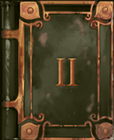
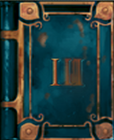

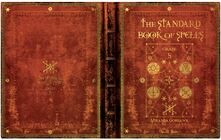


![Quintessence A Quest.jpg (29 KB) Quintessence: A Quest[40]](https://static.wikia.nocookie.net/harrypotter/images/0/08/Quintessence_A_Quest.jpg/revision/latest?cb=20180709194414)
![ChadwicksCharms.jpg (131 KB) Chadwick's Charms by Chadwick Boot[41]](https://static.wikia.nocookie.net/harrypotter/images/0/0e/ChadwicksCharms.jpg/revision/latest/scale-to-width-down/158?cb=20160916070650)
![Advanced Charm Casting.jpeg (1.91 MB) Advanced Charm Casting by Eulalie Hicks[42]](https://static.wikia.nocookie.net/harrypotter/images/e/eb/Advanced_Charm_Casting.jpeg/revision/latest/scale-to-width-down/105?cb=20220316211657)
![The-dark-forces-a-guide-to-self-protection-pottermore.png (42 KB) The Dark Forces: A Guide to Self-Protection by Quentin Trimble[38]](https://static.wikia.nocookie.net/harrypotter/images/8/8b/The-dark-forces-a-guide-to-self-protection-pottermore.png/revision/latest/scale-to-width-down/109?cb=20180708161723)
![Curses-and-counter-curses.png (70 KB) Curses and Counter-Curses by Vindictus Viridian[38]](https://static.wikia.nocookie.net/harrypotter/images/f/f8/Curses-and-counter-curses.png/revision/latest/scale-to-width-down/114?cb=20201123010826)
![Basic Hexes for the Busy and Vexed PM.png (55 KB) Basic Hexes for the Busy and Vexed[11]](https://static.wikia.nocookie.net/harrypotter/images/d/d7/Basic_Hexes_for_the_Busy_and_Vexed_PM.png/revision/latest/scale-to-width-down/140?cb=20140117010516)
![Jinxes-for-the-jinxed-lrg.png (41 KB) Jinxes for the Jinxed by Cauã Nemerus[43]](https://static.wikia.nocookie.net/harrypotter/images/0/01/Jinxes-for-the-jinxed-lrg.png/revision/latest/scale-to-width-down/140?cb=20141031205206)
![Book-of-spells-en-gb-lrg.png (72 KB) Book of Spells by Miranda Goshawk[1]](https://static.wikia.nocookie.net/harrypotter/images/2/2b/Book-of-spells-en-gb-lrg.png/revision/latest/scale-to-width-down/140?cb=20130803105101)